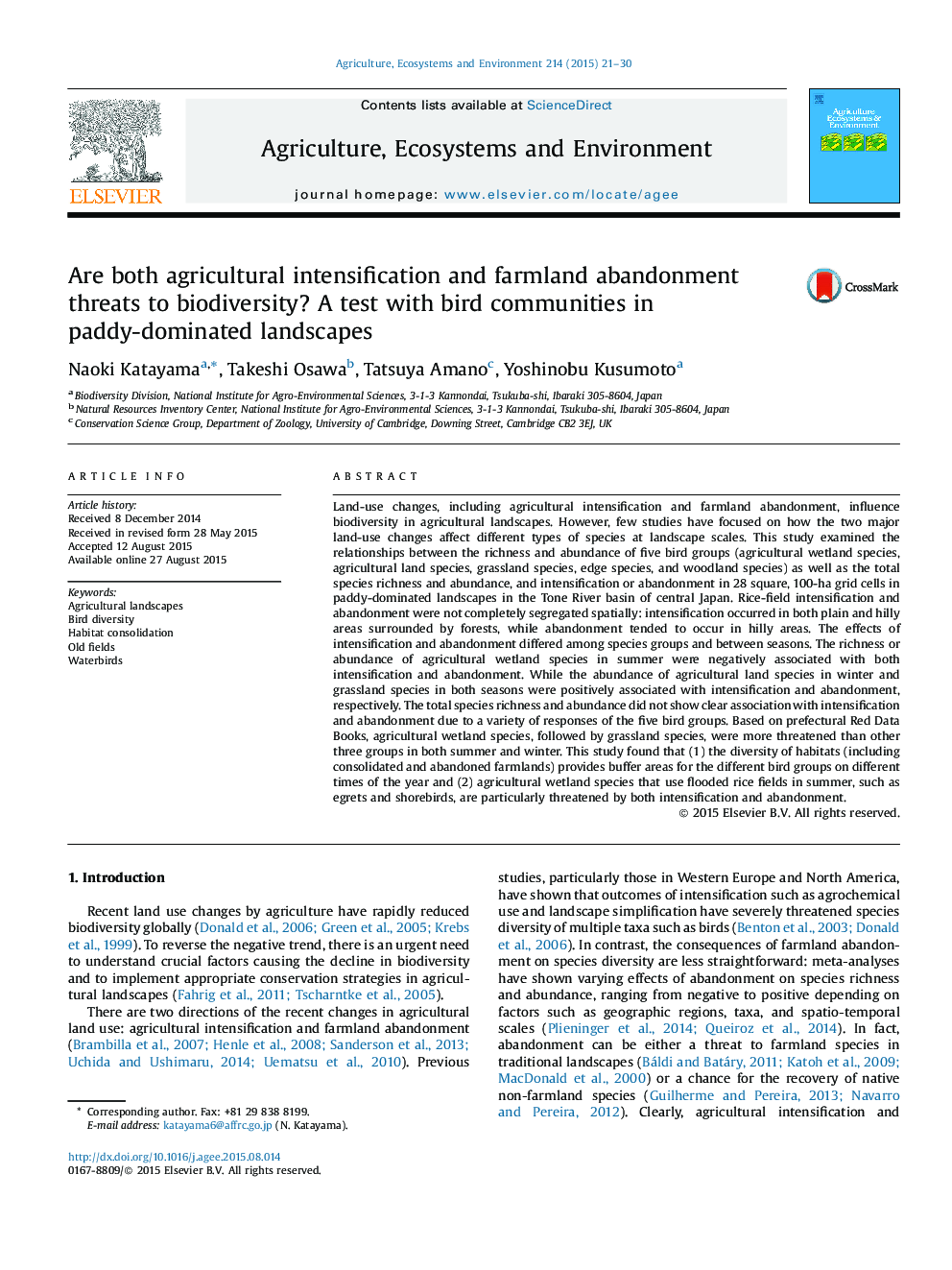| Article ID | Journal | Published Year | Pages | File Type |
|---|---|---|---|---|
| 2413608 | Agriculture, Ecosystems & Environment | 2015 | 10 Pages |
•In Japan, both intensified and abandoned rice fields are found within a small area.•Effects of intensification and abandonment differed between bird groups and seasons.•Agricultural wetland species in summer were threatened by both intensification and abandonment.•Grassland species in both summer and winter benefited from abandonment.•High threat status of agricultural wetland species supports the finding of this study.
Land-use changes, including agricultural intensification and farmland abandonment, influence biodiversity in agricultural landscapes. However, few studies have focused on how the two major land-use changes affect different types of species at landscape scales. This study examined the relationships between the richness and abundance of five bird groups (agricultural wetland species, agricultural land species, grassland species, edge species, and woodland species) as well as the total species richness and abundance, and intensification or abandonment in 28 square, 100-ha grid cells in paddy-dominated landscapes in the Tone River basin of central Japan. Rice-field intensification and abandonment were not completely segregated spatially: intensification occurred in both plain and hilly areas surrounded by forests, while abandonment tended to occur in hilly areas. The effects of intensification and abandonment differed among species groups and between seasons. The richness or abundance of agricultural wetland species in summer were negatively associated with both intensification and abandonment. While the abundance of agricultural land species in winter and grassland species in both seasons were positively associated with intensification and abandonment, respectively. The total species richness and abundance did not show clear association with intensification and abandonment due to a variety of responses of the five bird groups. Based on prefectural Red Data Books, agricultural wetland species, followed by grassland species, were more threatened than other three groups in both summer and winter. This study found that (1) the diversity of habitats (including consolidated and abandoned farmlands) provides buffer areas for the different bird groups on different times of the year and (2) agricultural wetland species that use flooded rice fields in summer, such as egrets and shorebirds, are particularly threatened by both intensification and abandonment.
